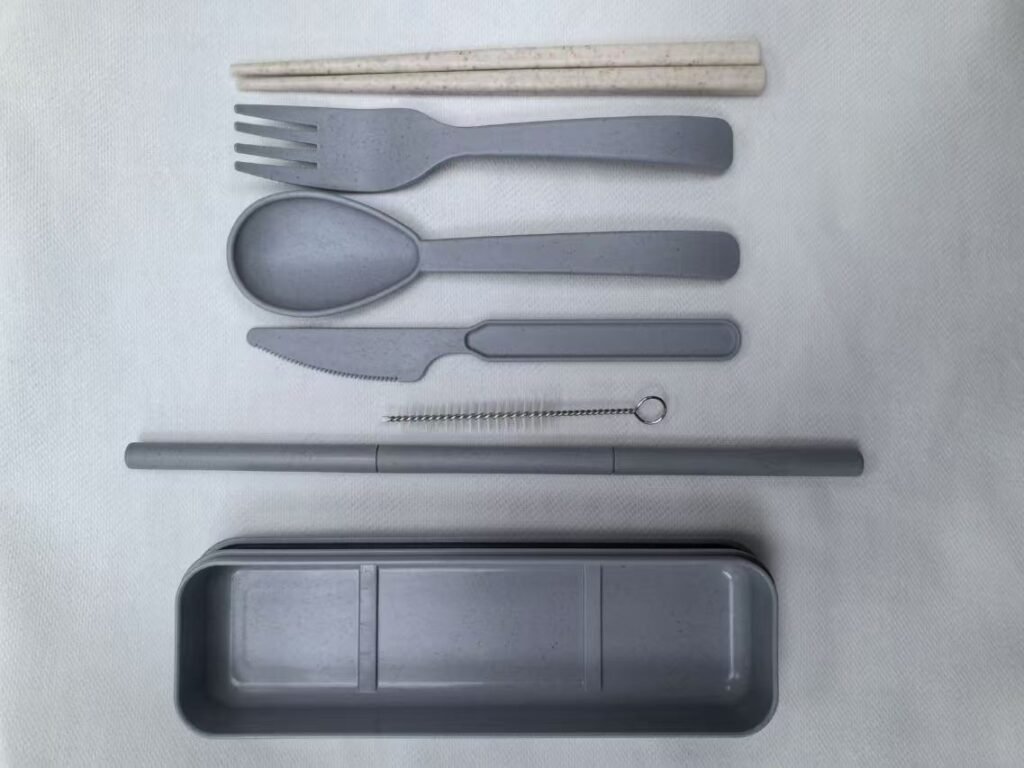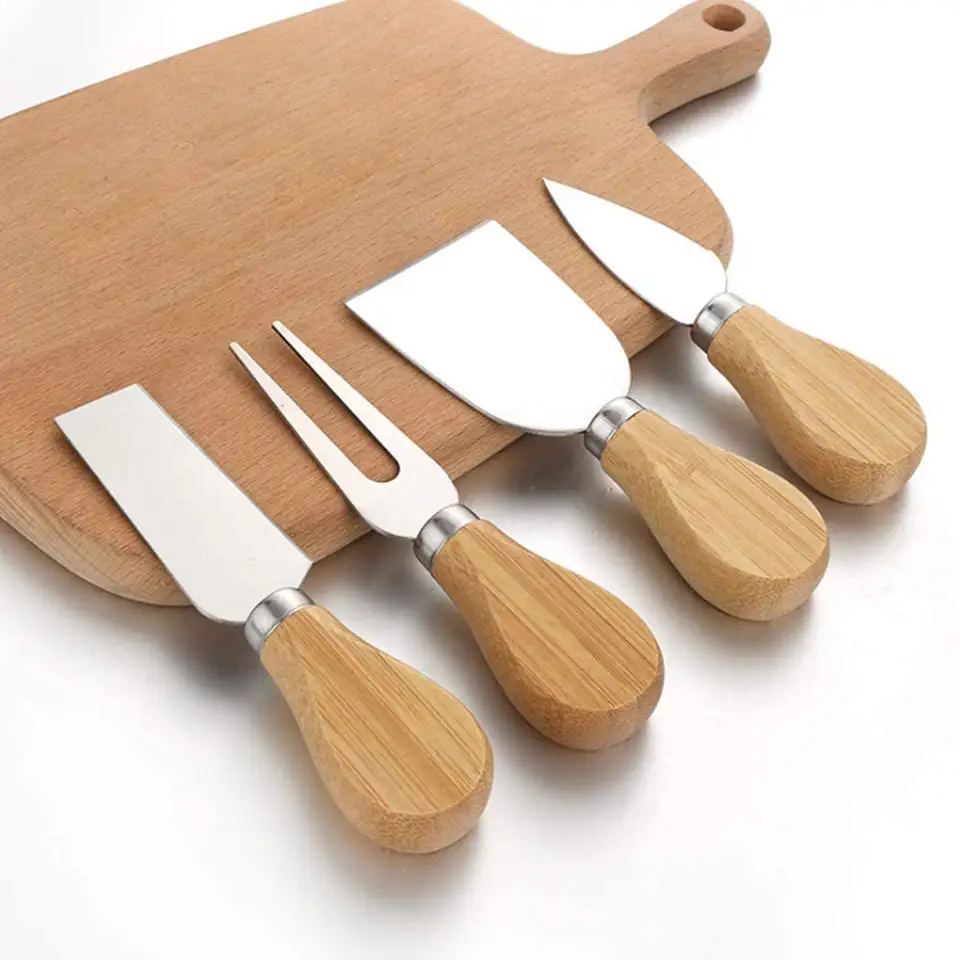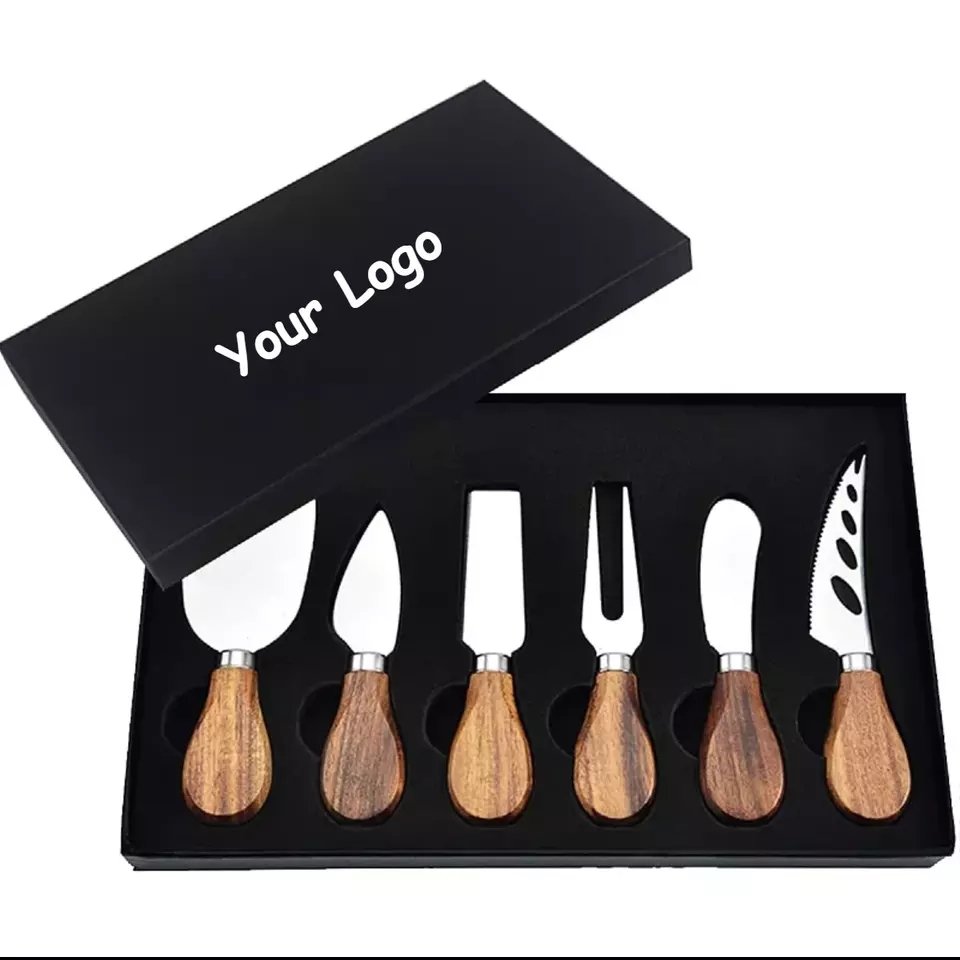Outdoor dining is booming, but old-school cutlery can’t keep up. People want lighter, tougher, smarter tools—and the industry is finally responding.
In 2025, outdoor cutlery is all about new materials, smarter designs, and multi-functionality that fits every kind of adventure.
From weekend campers to serious backpackers, expectations are changing fast. Keep reading to find out which trends matter, and how to stay ahead of them.
Table of Contents
What are the latest material trends in outdoor cutlery?
People are tired of flimsy plastic and heavy steel. They want the perfect balance of performance, durability, and weight.
SS18/10, SS18/8, and titanium are leading the material innovation in 2025, offering durability, rust-resistance, and lightweight strength for modern outdoor cutlery.
In my experience working with brands worldwide, material choice is always the first conversation when launching a new cutlery line. In 2025, we’re seeing a clear shift toward premium-grade stainless steel and high-performance metals. Here’s how the key materials compare:

Comparison of Outdoor Cutlery Materials
| Material | Strength | Rust Resistance | Weight | Cost | Use Case |
|---|---|---|---|---|---|
| SS18/10 | High | Excellent | Medium | $$ | Premium outdoor sets |
| SS18/8 | Medium | Good | Medium | $ | Mid-range, all-purpose |
| Titanium | Very High | Excellent | Very Low | $$$ | Ultralight, high-end use |
Many outdoor enthusiasts love titanium for its featherlight feel and sleek, matte finish. It doesn’t retain odors or flavors and won’t corrode—even in salty air. However, its high cost still makes it a niche choice.
On the other hand, SS18/10 remains a favorite among established brands because it balances cost, quality, and safety. It resists stains and lasts years without losing its shine. SS18/8 is a good alternative for those wanting something durable without the premium price tag.
From my side as a supplier, I’ve also noticed more customers asking about coatings—like PVD or anodized finishes—to add color and texture. These don’t just look cool, they also offer extra protection.
Material isn’t just about durability. It sends a message. When someone opens their portable cutlery set and sees sleek titanium, they know they’ve invested in performance.
How are ergonomic designs transforming outdoor dining?
Cutlery can be beautiful—but if it’s awkward to hold, nobody wants to use it twice.
New outdoor cutlery prioritizes grip, balance, and usability, with ergonomic handles and optimized weight distribution for comfort in any condition.
Imagine eating in the cold with gloves on. Traditional skinny metal handles slip, wobble, or dig into your palm. That’s why 2025’s outdoor cutlery designs put a heavy focus on ergonomics.
I’ve worked with several designers who now start their sketches not with appearance—but with grip. They consider palm curvature, finger pressure zones, and even hand fatigue during longer meals.
Here’s what matters most in ergonomic outdoor design:
Key Ergonomic Features in 2025 Outdoor Cutlery
| Feature | Benefit |
| Non-slip grip textures | Prevents drops, especially with wet hands |
| Contoured handles | Reduces strain and feels more natural to hold |
| Balanced weight | Enhances control and avoids tipping |
| Glove-compatible widths | Usable in cold or rugged environments |
Brands are also experimenting with different materials in the handle—rubber inserts, bamboo overlays, and even bio-resin. These upgrades might seem small, but they make a big difference in comfort.
For example, one Turkish brand we work with added a subtle curve at the base of their spoon, and customers immediately reported better grip and less wrist strain. Little things like this turn a product from “okay” to “wow.”
In short: the best outdoor cutlery in 2025 doesn’t just look good—it feels good too.
Is sustainability a priority for new outdoor cutlery?
Green values aren’t just trends. Customers now expect products to respect the planet.
Yes—sustainability is becoming a major selling point, with recyclable metals, eco-friendly packaging, and durable design taking center stage.
I see this every day—buyers asking, “What’s the carbon footprint of this?” or “Can we use biodegradable packaging?” Sustainability is no longer a bonus. It’s the baseline.
Here’s how outdoor cutlery brands are responding:
Sustainable Practices in Outdoor Cutlery

| Focus Area | What Brands Are Doing |
| Material Sourcing | Using recycled stainless steel or responsibly mined titanium |
| Packaging | Switching to cardboard wraps and soy-based inks |
| Product Longevity | Promoting reusability and long product lifecycles |
| End-of-life Recycling | Designing for disassembly and material reuse |
But let’s be honest: there’s a tension. Sustainability adds cost. Some buyers still go for the cheapest option. Our job, as suppliers and designers, is to educate customers. “Buy once, use forever” is the message I push all the time.
One of my German clients switched to full stainless steel from plastic and saw returns drop dramatically. That’s good for the planet and their bottom line.
The future is circular. And the brands that understand this will win.
What are the most innovative multi-functional tools in 2025?
Space-saving gear is hot. Outdoor users want one tool that does three things.
Multi-functional outdoor cutlery in 2025 combines tools like spoon-fork-knife combos, bottle openers, and even fire starters in compact, clever designs.
Multi-tool cutlery is not new, but in 2025 it’s getting a serious upgrade. Gone are the clunky “sporks” of the past. Now, we’re seeing clean, modular systems that snap, fold, or transform.
Here are the biggest innovations I’ve seen this year:
Popular Multi-Functional Cutlery Features
| Tool Combo | Description |
| Spoon-Fork-Knife hybrid | One tool, three edges—without compromising usability |
| Integrated bottle/can opener | Built into the handle or base |
| Firestarter rods or flint | Hidden in the handle or sheath |
| Clip-on or magnetic systems | Easy to attach to bags or belts |
One Korean manufacturer we supply developed a cutlery set that uses magnetic connectors, so the spoon and fork snap together for compact storage. Customers loved it—not just for the function, but because it felt smart.
Another trend is mix-and-match systems. Users can build their own sets from modular components, choosing the tools they need for a specific trip.
Of course, not every idea works. Some designs get too complex and end up being fragile. The challenge is always to innovate without sacrificing strength or ease of cleaning.
When done right, though, these tools are game-changers. One tool, many tasks—that’s the outdoor cutlery goal for 2025.
What role do user experiences play in future design?
Design without listening is just guesswork. The best ideas start with real feedback.
User experience is driving outdoor cutlery innovation, pushing brands to create designs based on real use cases, field testing, and everyday frustrations.
Every time I meet with clients, I ask the same thing: “What are your customers saying?” Because no matter how good something looks on a CAD file, the real test is outside, in the dirt, rain, or snow.
Here’s how user experience is shaping 2025 cutlery trends:
Key User-Centered Design Drivers
| UX Focus | Real-World Application |
| Feedback loops | Beta testing with campers and outdoor professionals |
| Scenario-based design | Creating for one-hand use, cold weather, quick meals |
| Easy maintenance | Dishwasher-safe or wipe-clean surfaces |
| Emotional connection | Aesthetics and feel that users are proud to show off |
For example, we had one customer who hated how food got stuck in their foldable fork’s hinge. That small insight led to a new design with a sealed pivot. Sales jumped. That’s the power of listening.
In 2025, the brands that care about UX are winning hearts. Not because their tools are fancy, but because they work where it matters—out in the wild.





